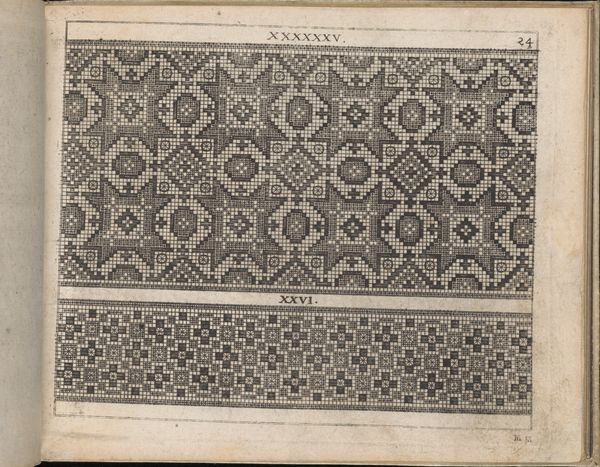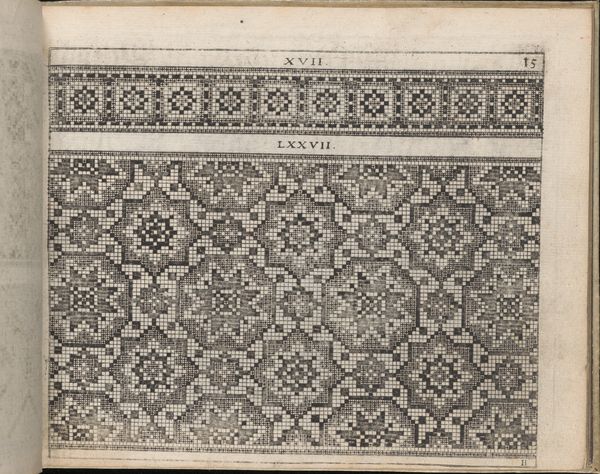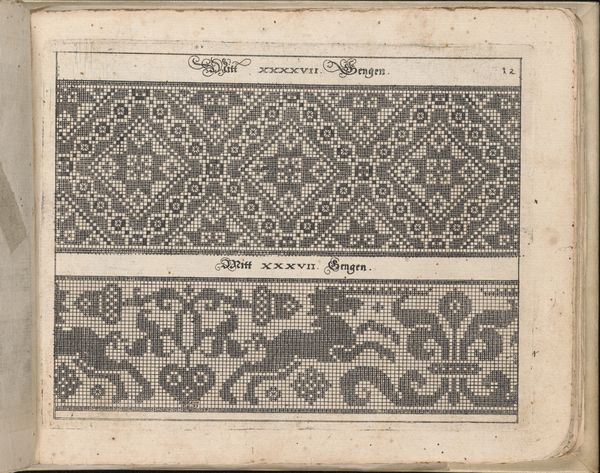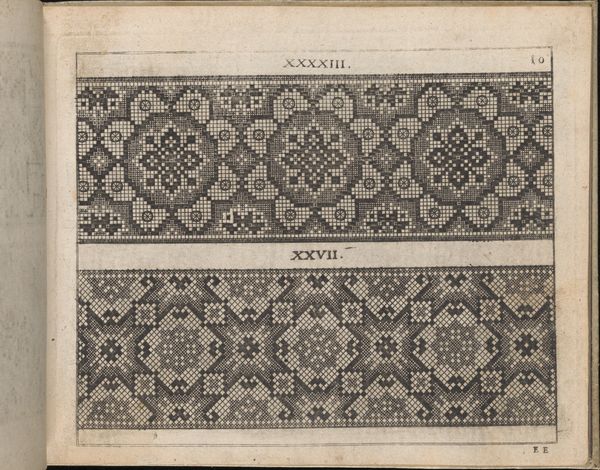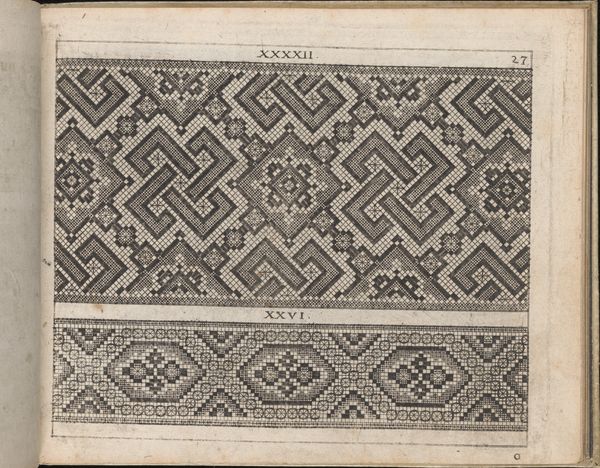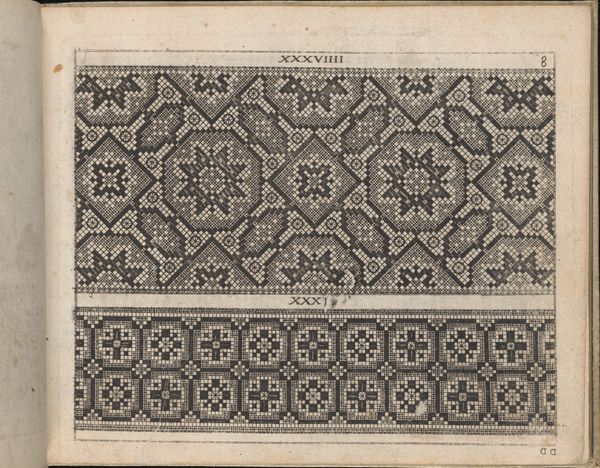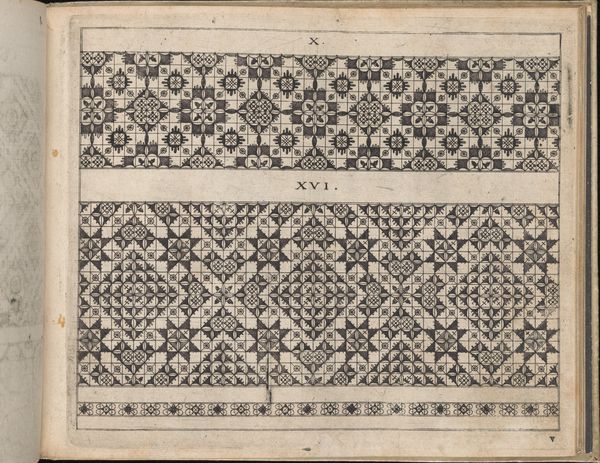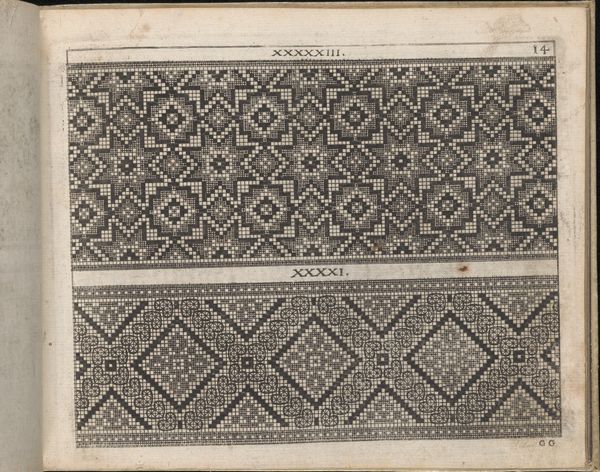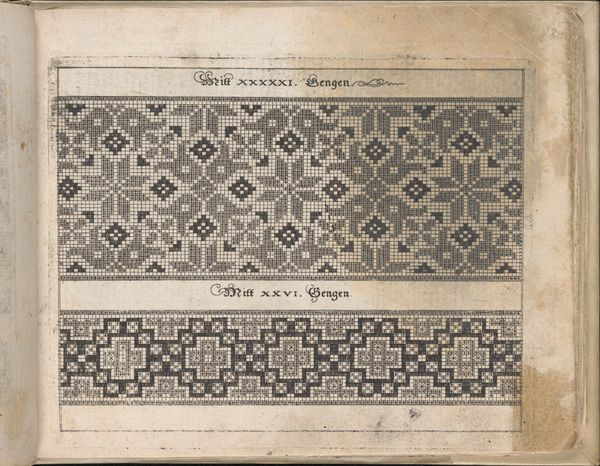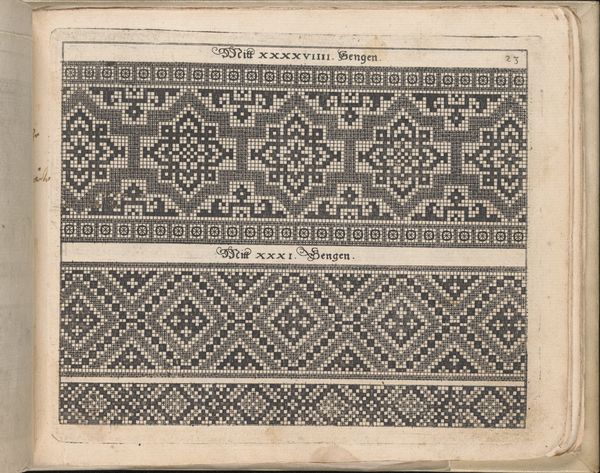
drawing, ornament, print, etching, engraving
#
drawing
#
ornament
#
toned paper
#
ink paper printed
# print
#
etching
#
book
#
geometric
#
line
#
engraving
Dimensions: Overall: 5 11/16 x 7 1/16 x 3/4 in. (14.5 x 18 x 1.9 cm)
Copyright: Public Domain
Curator: The initial impression is quite striking – such delicate geometry rendered in such sharp detail! The patterns seem almost hypnotic. Editor: Indeed! We’re looking at a page, specifically page 26r, from "Newes Modelbuch in Kupffer" created in 1604 by Johann Sibmacher. This particular page showcases a selection of patterns rendered using engraving, etching, and print techniques. These patterns are largely geometric in style and meant for ornamentation. The Metropolitan Museum of Art is lucky to hold a copy in its collection. Curator: Ornamentation is such an interesting word here, because the patterns feel like far more than mere surface decoration. Each tiny square seems to carry some kind of significance within the larger design. It almost feels like the visual equivalent of ancient textual glyphs. Editor: I agree, these weren’t just decorative motifs. Pattern books such as this one played a significant role in 17th century European visual culture and social life. They acted as a crucial resource for artisans from all social stations, and they circulated and transmitted artistic trends far beyond urban centers. Curator: I’m fascinated by that. It speaks to how symbols can have cultural agency of their own. The very act of replication creates social ties among the engraver, the printer, the artist and artisans who used this pattern as template. Each tiny shift in their application is almost a unique utterance within a larger visual conversation. Editor: Precisely. Think about how these motifs would eventually appear on textiles, metalwork, or even architectural features in far-flung locales, carrying echoes of Nuremberg throughout Europe, influencing styles and shaping tastes. Curator: It becomes a form of visual vernacular, like a folk song translated through different instruments and voices across the generations. There is also a distinct contemplative dimension: you get lost within the complexity and detail, the geometric repetition which has an emotional quality similar to meditative mandalas. Editor: Right, Sibmacher’s book is much more than a source for material creation; it is also a historical record about cultural production, disseminating models across social, geographic, and artistic landscapes. These shapes offer direct access into a bygone era. Curator: This speaks to the latent power that all patterns hold within our lives: they weave the symbolic threads that ultimately make up the larger cultural tapestry that envelops us. Editor: Well said. The deceptively simple shapes open up a world of intricate connections and echoes of early modern life.
Comments
No comments
Be the first to comment and join the conversation on the ultimate creative platform.
